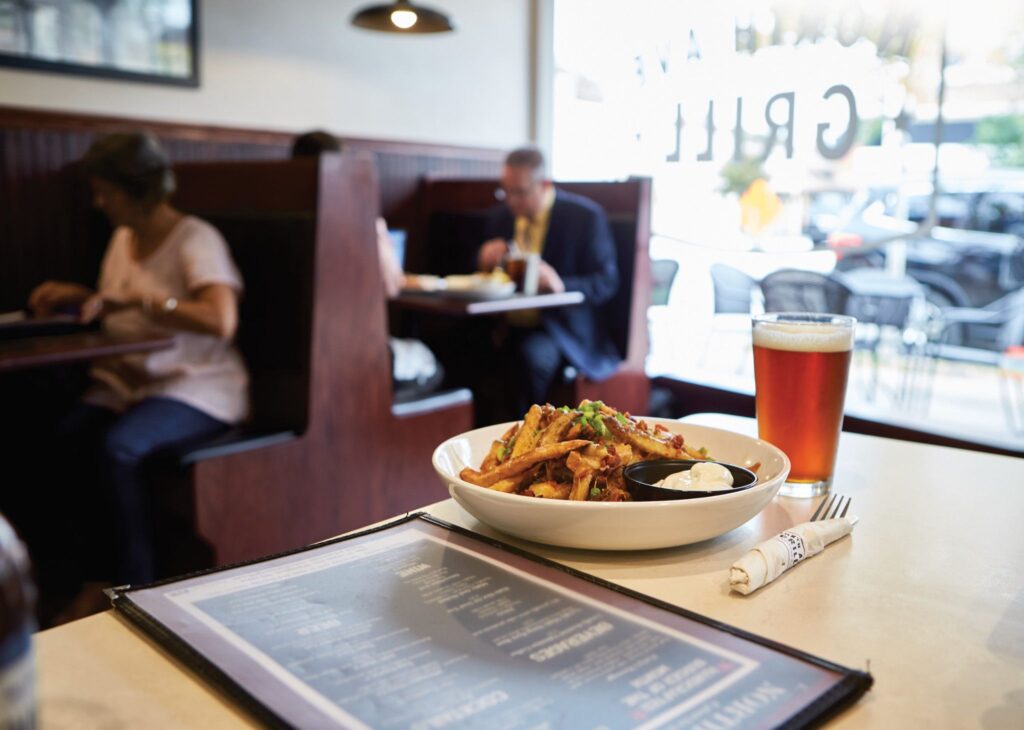In the dynamic and competitive restaurant industry, crafting a menu that not only tantalizes taste buds but also ensures profitability is a delicate balance. But focusing on the psychology behind what customers order can help operators save money, enrich their menu offerings and continue to delight customers.
That’s where the Golden Triangle concept comes into play. Backed by science, the concept is a strategic approach that can elevate a menu and boost an operation’s success.
Gordon Food Service® Business Solutions Specialist Samantha Hawkes said the concept is a “great starting point” for operators who want to improve their menus. “It’s visual, so it works for everyone and is pretty widespread. At the end of the day, everyone reads the same way,” she said.
The Golden Triangle refers to the optimal placement of high-profit items on a menu, strategically positioning them to catch the customer’s attention. Picture an imaginary triangle on a menu, formed by connecting three key points: the upper right corner, the upper left corner, and the lower center. Hawkes said these points are “prime real estate,” and strategically placing star dishes in this Golden Triangle can significantly impact customer choices and your bottom line.
Hawkes suggests operators know their customers as well and change up the structure of their menu from time to time. She said that regularly updating and analyzing your menu to reflect changing trends and customer preferences ensures the Golden Triangle remains effective.
Choose Your Words Carefully
How operators describe their menu items is also changing, Hawkes said. Sometimes less is more. The days of wordy menu item descriptions are long over. Hawkes said using old-school descriptors is outdated, and advises saving a lengthy description for an exceptional dish or something really different.
“Descriptions can captivate the eye, but scratch things like ‘World Famous’ and ‘No. 1 Pizza’ – ‘World Famous’ according to who?” Hawke asks. “Just tell us what’s on it.”
What does sell is more earth-friendly descriptions like local, farm fresh and sustainable, she said. Be concise but captivating. Hawkes notes that the items with sensory, cultural, geographical and nostalgic descriptors sold 27% more.
According to Nation’s Restaurant News, short descriptions, appealing visuals and a logical layout contribute to a positive customer experience and increase the likelihood of upselling.
Short and Sweet Results in Success
Lastly, Hawke advises operators to stick to the 80/20 rule and identify the star players in their culinary repertoire—the dishes that consistently leave patrons raving. Those meals represent the 20% and should become the menu’s focal point and define the establishment.
“It’s about shrinking down the menu items. Customers are looking at five to eight items,” she said.
Implementing the 80/20 rule requires a keen understanding of customer preferences and a commitment to culinary excellence. Chefs must invest time and creativity in perfecting the chosen few, ensuring that each dish meets and exceeds expectations. Through this focused approach, menus really tell a story about the restaurant and its brand.
Gordon Food Service offers several solutions to help craft a successful menu, including Gordon Ordering and Gordon Restaurant Pro. Ask your sales representative for more information. To learn more about elevating your menu for greater profitability, become a customer today!




























